AACtual Therapy: Fun with Puzzles
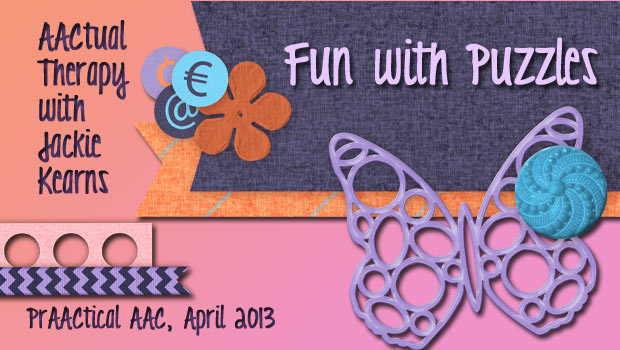
Today, we’re pleased to introduce SLP Jackie Kearns, coordinator of the Technology Resource Center at the Cleveland Clinic Children’s Hospital for Rehabilitation. Prior to that, she received her bachelor’s and master’s degrees from Ohio University. She completed both an undergraduate and graduate level thesis and has published in Contemporary Issues in Communication Sciences and Disorders. Jackie has over 5 years’ experience working with medically complex children in both inpatient and outpatient hospital settings. She has provided numerous AAC evaluations and treatment for children ranging from 1-21 years of age. In addition, she has done numerous presentations and in-services for staff at the Cleveland Clinic. We’re grateful to Jackie’s AAC professor and mentor, Dr. John McCarthy for recommending her to us.
Therapy Activity: Fun with Puzzles
Intended audience: Early intervention, preschool aged children, and/or emergent AAC communicators
- Eye gaze, reaching
- Picture communication symbols
- Single message voice output communication aides
Goals for overall lesson
- Assess and teach vocabulary knowledge
- Following directions
- Facilitating age appropriate interests
Receptive Language Goals
- Following basic directions (put in, give me)
- Receptive vocabulary identification
- Objects
- Categories
- Basic Concepts
Expressive Language Goals
- Choice making (E.g., Which puzzle piece do you want?)
- Requesting Continuation
- Requesting Completion
- Asking for assistance
Materials: big/small knob puzzles, Picture Communication Symbols, single message voice output communication aides
Target Words or Messages:
- Labels for puzzle pieces: May include labels, categories, or basic concepts (e.g., colors)
- “More”
- “Help”
- “Stop”
Implementing the Activity
I typically start off by asking the child to try to take out the puzzle pieces and then hand them to me. If they cannot do it themselves due to their fine and gross motor impairments, then I provide hand over hand assistance for the experience. I will then begin to present 2-3 puzzle pieces at a time paired with a verbal prompt. I present the puzzle pieces upright and close to eye level. I often start with basic eye gaze and reaching. I provide a prompt, and then note the child’s eye gaze or reaching response. If I am doing a receptive language task, I may prompt the child to ‘find x.’ If I am doing an expressive language task, then I will add in choice making prompts (e.g., which puzzle piece do you want) by using the real objects (puzzle pieces), requesting continuation/completion (e.g., do you want more/all done), or requesting assistance (e.g., do you need help). I will use Picture Communication Symbols for those tasks for which real objects are not appropriate. I always try to informally add in social language comments such as ‘oh no’ or ‘awesome’ throughout the activity as well.
- I always try to present at least 2 objects, pictures, or voice output communication aides at a time.
- I also make sure to vary up the location of the desired target throughout the activity (e.g., placement left/right, up/down).If the child has difficulty visually scanning his field of choices or is inattentive, I present the choices individually with a delay to establish attention, then side by side for the communication opportunity.
- If I am not sure which target the child is going for, then I will provide the question/prompt again while simultaneously changing the location of the desired target.
- For voice output aides when the child has difficulty scanning, I will present two voice output aides but one aide does not have a picture attached to it.
- If the child has any oral motor control for speech production, I am encouraging verbal efforts throughout the activity through vocalizations or verbal approximations.
- I limit my use of sign language for those individuals who have the required fine motor skills. Many of my children are have severe fine motor deficits, and so sign language is not a functional option for communication.
- I am constantly reinforcing and encouraging any and all communication attempts, whether it is through light tech or no tech augmentative and alternative communication strategies.
- Many emergent communicators do not intentionally exhibit purposeful communication at first. It is up to the facilitator to recognize those unintentional acts and reinforce them. Only then will children begin to exhibit intentional communication skills.
Impressions: I love doing age appropriate activities with children, regardless of their gross and fine motor skills. I have found that, for most children, age appropriate activities facilitate attention and motivation to tasks longer than switch toys. Increased motivation often leads to better accuracy, which gives me a better picture of the child’s overall language skills. In addition, because the activities may be more demanding physically, I can indirectly support my occupational and physical therapists’ target skills.
Filed under: PrAACtical Thinking
Tagged With: AACtual therapy, beginning communicator, Jackie Kearns, play, puzzles
This post was written by Carole Zangari
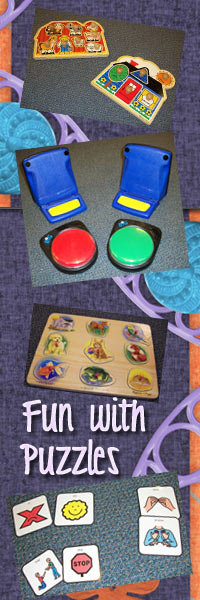


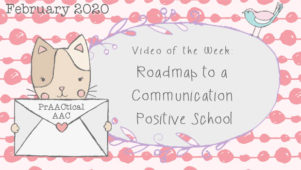
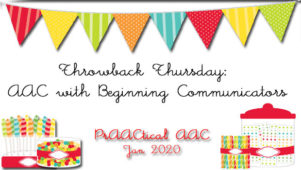
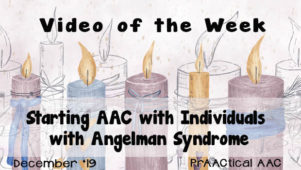
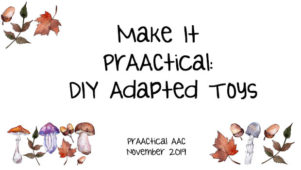
2 Comments
Congratulations on a great post! I’m proud to count you as a colleague Jackie!
Great post! I was wondering if you could explain how you use “stop” vs. “all done” using the puzzle activity? I am using pictures for several students (PECS and communication books/boards) but typically will just teach them “all done.”